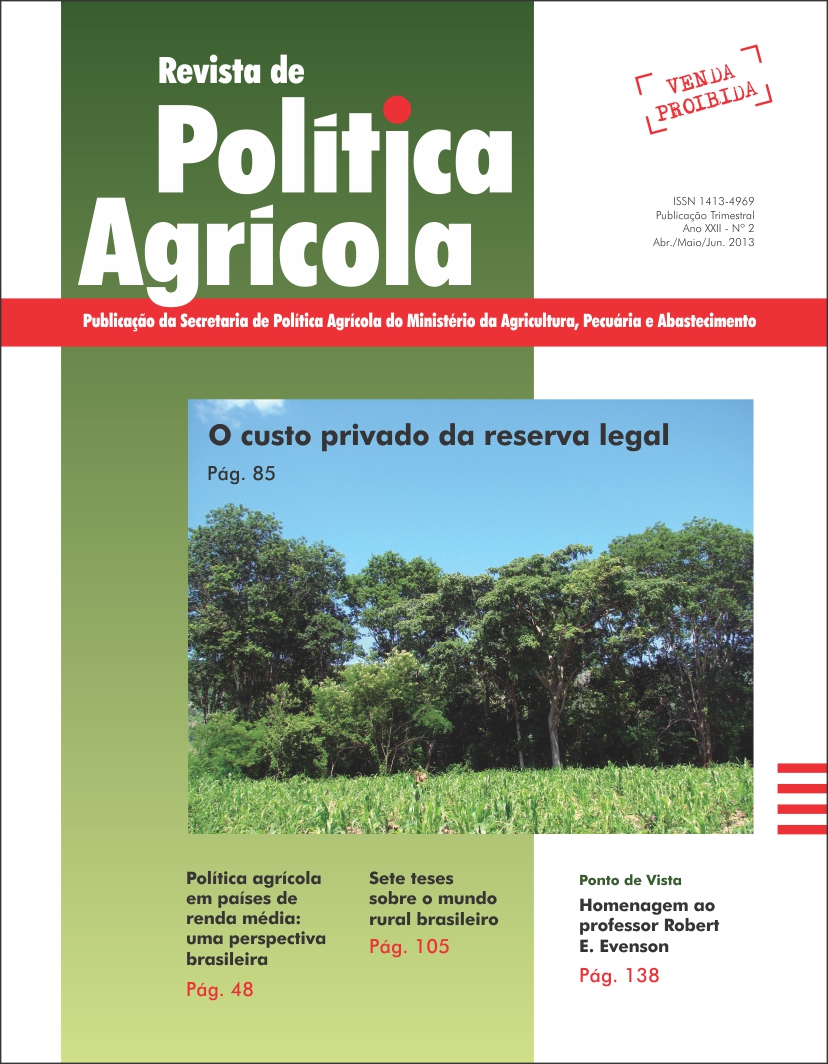The private cost of the legal reserve
Keywords:
agriculture and livestock, Brazil, case studies, profitability.Abstract
This paper estimates the costs afforded by farmers due to allocation of land as legal reserve by them, as established by the Brazilian forest code. The following cultures were analyzed as case studies: orange and sugarcane in the state of São Paulo; and maize and soybean in the states of Goiás, Mato Grosso and Paraná (all in Brazil). The analysis is based on the profitability reduction of these activities due to the additional costs with land afforded by farmers (because for each hectare planted with these crops, farmers should maintain 0.25 ha as legal reserve). As analysis tools, the internal rate of return and the net present value formulas were used for calculating both profitability reduction when there is legal reserve (compared to the lack of it), and a possible payment for environmental service (PES) that farmers would receive. The results indicated that: 1) among the analyzed crops, orange had the lowest relative reduction in profitability, because it met the legal reserve requirement, and sugarcane had the largest reduction; 2) if farmers were financially rewarded for the legal reserve, they would receive an amount 3 to 5 percent larger for sugarcane, maize and soybean, and from 4 to 10 percent larger for orange; and 3) if these PES are not paid, the opportunity cost of legal reserve reaches billions of reais, as in the case of maize – it reached 1 billion reais during the 2012–2013 crop.Downloads
Published
2013-07-11
How to Cite
Campos, S. A. C., & Bacha, C. J. C. (2013). The private cost of the legal reserve. Revista De Política Agrícola, 22(2), 85–104. Retrieved from https://rpa.sede.embrapa.br/RPA/article/view/310
Issue
Section
Artigos Científicos


